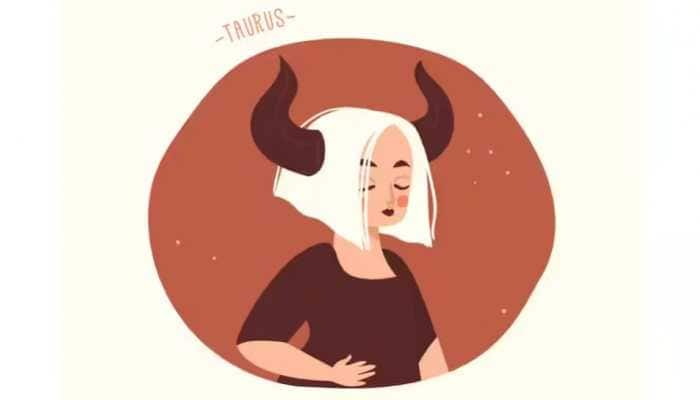Assembly elections: Battle lines drawn in Punjab with three-way contest
With battle lines drawn for the February 4 polls to Punjab Assembly, a high-octane battle of ballot is on the cards especially in some of the constituencies where the heavyweights of the three main parties are contesting.
Trending Photos
)
Chandigarh: With battle lines drawn for the February 4 polls to Punjab Assembly, a high-octane battle of ballot is on the cards especially in some of the constituencies where the heavyweights of the three main parties are contesting.
The new entrant Aam Aadmi Party (AAP) is adding a third dimension to the contest which has been dominated by Congress and Akali Dal-BJP alliance so far.
All eyes will be riveted on the high-profile constituencies of Lambi, Jalalabad, Amritsar east, Lehragagga, Patiala and Batala seats as elections will be held for the 117-member Assembly.
Lambi, a pocket borough of chief minister Parkash Singh Badal, is set to witness a keen battle with Punjab Congress chief Amarinder Singh challenging the Akali patriarch and AAP's Jarnail Singh making in roads into traditional votes of Shiromani Akali Dal (SAD).
Besides, deputy chief minister and SAD president Sukhbir Singh Badal is locked in a fierce battle in Jalalabad against AAP's Bhagwant Mann and Congress MP Ravneet Singh Bittu.
At Lehragagga, former chief minister Rajinder Kaur Bhattal is seeking re-election and burning mid night oil to oppose SAD's heavyweight leader and finance minister Parminder Singh Dhindsa, who has changed his seat from Sunam in this polls.
Former soldiers Captain (retd) Amarinder Singh of Congress and Gen (retd) J J Singh of SAD are fighting it out from Patiala urban seat, a traditional bastion of Congress.
Cricketer-turned-politician Navjot Singh Sidhu is a key man to watch from Amritsar east as he is in fray on Congress ticket, while AAP's Gurpreet Singh Ghuggi is battling it out from Batala.
A total of 1,146 candidates are in the fray for Punjab Assembly polls which is set to witness three-cornered contest between SAD-BJP, Congress and new entrant AAP.
Other political outfits in the fray include BSP, former AAP leader Sucha Singh Chottepur-led Apna Punjab Party, the Left comprising CPI and CPI(M), and SAD-Amritsar.
The Assembly election in Punjab is also considered a test of Prime Minister Narendra Modi's popularity post demonetisation.
SAD has fielded candidates in 94 seats while its ally BJP has nominated candidates in remaining 23 seats. Congress is contesting alone on all seats.
AAP, which is contesting Punjab polls for first time, has fielded its candidates in 112 seats, while its ally Lok Insaf Party, led by Ludhiana-based Bains brothers, have fielded its nominees in five seats.
Punjab was the only state which gave AAP its four MPs in the 2014 parliamentary election.
Just like AAP's performance in 2014, its fortunes in the state remain unpredictable.
Just a year ago, AAP seemed unbeatable, but now appears on a sticky wicket, political observers said.
More than the opposition, the party suffered due to blows from within.
Most of the prominent faces it fielded in 2014 or those who joined it then have either been kicked out or pushed to fringe.
Allegations of corruption in ticket allocation, infighting and stings by party activists on each other are some of the hurdles AAP faces.
The Assembly polls are crucial for Congress' revival.
In the 2014 general election, Punjab was the only state
where Congress could inflict a wound on the BJP with its state unit chief Amarinder Singh beating now Union finance minister Arun Jaitley from Amritsar.
This revived the former CM's political prospects and has now snowballed into his biggest strength to stake claim to head the party in the state.
In a first for Congress, the party's campaign in the state is woven around the name of a leader -- Amarinder.
Though chances of the Congress appear to have improved in public perception -- mostly due to anti-incumbency faced by the ruling SAD-BJP combine and the follies of AAP, but the biggest challenge remains infighting at local levels.
SAD -- the second oldest party of the country -- had set a record in 2012 by returning to power. It was the first time in the state that a party was given a consecutive term.
Now its leaders are claiming to form the government for the third time in a row. However, unlike 2012, Akalis are facing rebellion at many places in spite of the Badal family's iron grip on the party.
Though battling a 10-year anti-incumbency, SAD chief Sukhbir Singh Badal is putting up a brave face while his micro management skills are already at play.
A year ago, the popularity of SAD appeared to be at its lowest after the Bargari sacrilege incident and later firing at Sikh protesters in Behbal Kalan. But its aggression in doling out sops -- from free pilgrimage trains to several social welfare steps -- appears to have helped.
SAD is going to polls with Parkash Singh Badal (89), the oldest CM in the country, as its CM face for the sixth time, along with decision making and their execution largely by Sukhbir.
With two back to back victories in 2014, first in parliamentary elections and then in Haryana polls, BJP appears to be riding high on popularity.
Its leaders were blowing hot and cold about the alliance with the SAD. Former MP Navjot Singh Sidhu is going all out to attack the Akalis.
With just few days left to go for the crucial assembly elections in Punjab, there is political uncertainty on the issue as to who will assume power post-11 March, once the results are declared.
The reason for this is that Punjab, for the first time, is witnessing triangular contests in most of the 117 assembly constituencies.
In Punjab, there were days when political fight was between Shiromani Akali Dal (SAD) and Congress with no third party in the picture.
In 2017 elections in Punjab, it will be for the first time that there will be strong contest between SAD-BJP alliance, Congress and AAP.
The recent visits of Arvind Kejriwal, convener of AAP in Punjab, ahead of the elections are an indication of activeness of the party leaving a brunt on the politics of the state.
It had been a tradition after the reorganisation of Punjab in 1966 that the Congress and SAD have been alternatively forming the government.
However, in 2007, SAD-BJP alliance government had come into existence. As per the trend of politics in Punjab, it was the turn of Congress in 2012 but it happened otherwise and SAD-BJP got the second term.
During 2012, a new concept was launched of involvement
of family members. After winning the elections, Parkash Singh Badal himself became the chief minister and appointed his son Sukhbir as his deputy. Not only this, the important portfolios in the ministry are either with them or with their close relatives.
Traditional rivals, the Shiromani Akali Dal-Bharatiya Janata Party (BJP) alliance and the Congress, are not only fighting each other, but are aware of the political challenge being posed by the latest entrant on Punjab's political turf -? the fledgling AAP.
Each party is claiming to be headed for a clear and sweeping majority in the February 4 elections.
AAP started its political campaign from June last year but its fighting within itself over allegations of corruption in allotment of tickets, accusations of immoral activities of some leaders, lack of any big leader from Punjab who could be projected as the party's face and internal rumblings about outsiders -? mainly leaders from Delhi, Uttar Pradesh and other states -? running the AAP show in Punjab at the cost of local leaders, have all taken a toll on the party.
AAP wants to repeat a Delhi-type political magic in Punjab when it won 67 of the 70 assembly seats in the 2015 assembly polls.
The Akali Dal-BJP alliance, which has been in power in the state since 2007 for two consecutive terms, is aiming for a third stint. It is to be seen as to whether Sukhbir is able to once again deploy his strategic skills which, in the 2012 assembly election, broke the five-year Akali-Congress cycle of governments.
But his party faces anti-incumbency of the past decade, charges of corruption, and criticism that the financial health and clout of the ruling Badal family -? headed by his father Parkash Singh Badal -- has been multiplying at the cost of the state.
There also allegations of the Badals patronising drug cartels and other mafias in money-spinning businesses like sand mining, infrastructure, transport and cable TV.
Its result will also decide the destiny of two men eyeing for an opportunity to rise up and challenge the BJP in the next general election -? Arvind Kejriwal and Rahul Gandhi. Punjab is important because it is the only state out of the five going to polls between January and March where both Congress and AAP have a chance of winning.
The 10 years of incumbency and issues of corruption, drug mafia and dynastic rule have put the BJP-SAD government in a tight corner.
For the Congress, a victory in Punjab would be the first sign of hope since it went into coma after the advent of Prime Minister Narendra Modi on the scene.
In 2013, since it lost Rajasthan, Madhya Pradesh, Delhi and Chhattisgarh, the Congress has managed to win only in Karnataka. A string of losses has put it on the verge of disappearance.
Anyhow, all the three major players are charting a difficult and uncertain course, leaving the voters confused to take final decision to use their right to franchise.
Stay informed on all the latest news, real-time breaking news updates, and follow all the important headlines in india news and world News on Zee News.
Live Tv







)
)
)
)
)
)
)
)
)
)
